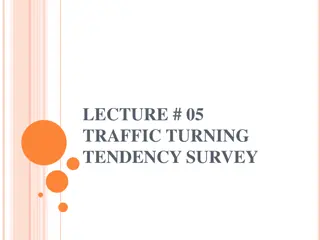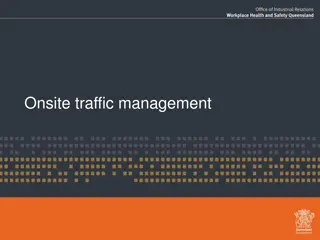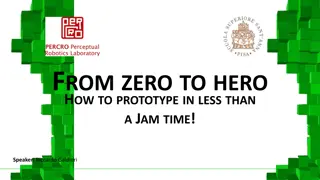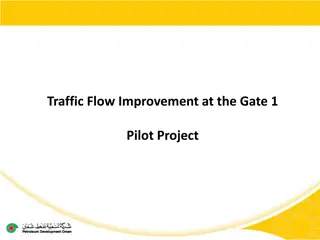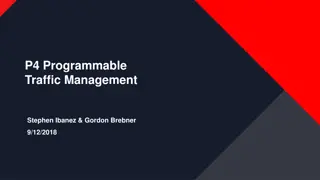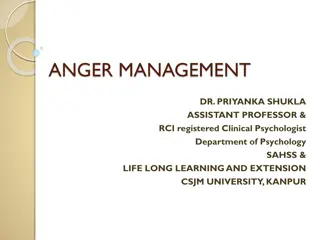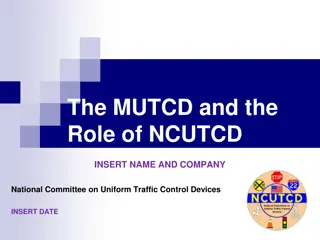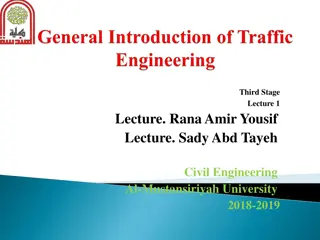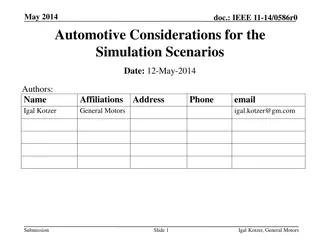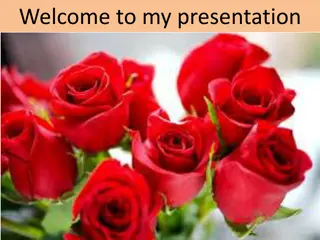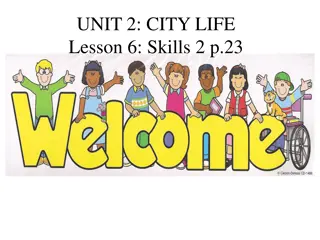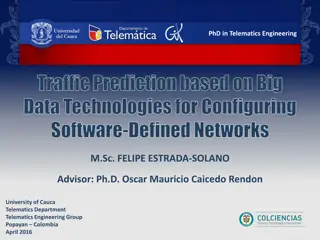Understanding Traffic Education: A Lesson on Traffic Jams and Solutions
Join Mr. Ariful Islam in his English class for Alim 1st year students as he introduces the topic of Traffic Education. Through warm-up activities and reading Michael Hobbes' article on traffic challenges in Dhaka, Bangladesh, students explore the causes of traffic jams and envision solutions to improve traffic systems. The lesson aims to raise awareness about traffic issues and stimulate discussions on creating efficient traffic management strategies.
Download Presentation

Please find below an Image/Link to download the presentation.
The content on the website is provided AS IS for your information and personal use only. It may not be sold, licensed, or shared on other websites without obtaining consent from the author. Download presentation by click this link. If you encounter any issues during the download, it is possible that the publisher has removed the file from their server.
E N D
Presentation Transcript
Hellow! My dear student. How are you? Welcome to my new class.
MD. ARIFUL ISLAM B.A. (Hon s), M.A. (English) LECTURER (English) SHAISTAGONJ KAMIL MADRASAH, SHAISTAGONJ , HABIGANJ. E-mail: arif046980@gmail.com
Class: Alim 1st year Subject: English1st Paper Time : 45 minutes Title: Traffic education Number of Students: 50 Date: 02/07/2021
Look at the following images . Whom do you see in the picture?
YES, ALL OF YOU ARE RIGHT. THEY ARE TRAFFIC POLICE. So, today our lesson is Traffic Education
HSC & Alim English for today Unit-2 Lesson 2 Traffic Capital of the World
1. Warm up activity: In a small group ask each other these questions and write down your answers. What do you think of traffic jams in our cities? What are the reasons for the traffic jams? How would a foreigner feel about our traffic system?
2. Now read this article written by Michael Hobbes titled "Welcome to the Traffic Capital of the World"
Now read silently I am in a tiny steel cage attached to a motorcycle, stuttering through traffic in Dhaka, Bangladesh. In the last ten minutes, we have moved forward maybe three feet, inch by inch, the driver wrenching the wheel left and right, wriggling deeper into the wedge between a delivery truck and a rickshaw in front of us.
Now read silently Up ahead, the traffic is jammed so close together that pedestrians are climbing over pickup trucks and through empty rickshaws to cross the street. Two rows to my left is an ambulance, blue light spinning uselessly. This is what the streets here look like from seven o clock in the morning until ten o clock at night. If you re rich, you experience it from the back seat of a car. If you're poor, you re in a rickshaw, breathing in the exhaust.
Now read silently I m sitting in the back of a CNG, a three-wheeled motorcycle shaped like a slice of pie and covered with scrap metal. I'm here working on a human rights project, but whenever I ask people in Dhaka what they think international organizations should really be working on, they tell me about the traffic.
Now read silently Alleviating traffic congestion is one of the major development challenges of our time. Half the world s population already lives in cities, and the United Nations (UN) estimates that the proportion will rise to nearly 70 percent by 2050. Dhaka, the world s densest and fastest growing city, is a case study in how this problem got so bad and why it s so difficult to solve.
Dhakas infrastructure doesnt match the scale of its population. Just 7 percent of the city is covered by roads, compared with around 25 percent of Paris and Vienna. Dhaka also suffers from the absence of a planned road network. There are 650 major intersections, but only 60 traffic lights, many of which don t work. That means the police force isn t enforcing driving or parking rules; they re in the intersections, directing traffic.
The cost of Dhakas traffic congestion is estimated at $3.8 billion a year, and that s just the delays and air pollution, not the less-tangible losses in quality of life. Paradoxically, the poor infrastructure is one of the reasons why the city is growing so fast. Without roads or trains to whisk them to the suburbs, Dhaka residents have no choice but to crowd into the middle, set up slums between high-rises, and walk to work.
Then there are the users of the roads. Besides pedestrians, the narrow lanes are shared by bicycles, rickshaws, scooters, motorcycles, CNGs, buses, and cars. All these modes take up a different amount of space and have different top speeds. Most people you talk to in Bangladesh blame the traffic jams on the rickshaws. There are too many of them, they say, and they drive so slowly that they trap the cars, buses, and CNGs behind them. The government is under pressure to designate some lanes as car- only, to build wider roads and overpasses, to take the slow traffic out from in front of the fast.
And this brings us to the third reason why the traffic problem is so difficult to solve. All of these fixes sound easy and obvious, but they come at a cost. One and a half million people drive rickshaws for a living, plus another few hundred thousand own and repair them. Government efforts to get people out of rickshaws and into buses and trains are going to attract huge opposition.
Even increasing bus capacity is more complicated than it sounds. A 2009 World Bank analysis found 60 separate bus companies in Dhaka. Since the bus companies compete with one another, the drivers have every incentive to drive aggressively and take more passengers than the buses can hold. What s more, the public transport isn t all that public. Many of the bus companies are owned or linked to political parties or powerful trade unions. Government efforts to unify or regularize the system would amount to a
PAIR WORK 3. Write T if the statement is true, F if the statement is false. ____ a. The annual cost of traffic congestion is 3.8 billion taka including less tangible costs such as quality of life. ____ b. Only 10 percent of Dhaka is covered by roads. ____ c. Each year 37,000 cars are being added to the streets of Dhaka. ____ d. The author compares CNG to a piece of pie. ____ e. According to the author, the public buses are truly public.
INDIVIDAL WORK 4. Answer the following questions: a. Why does the author think Dhaka s traffic congestion is difficult to solve? b. What are the arguments given for banning rickshaws? c. Why is it difficult to solve the traffic problem in Dhaka from a politician s perspective? d. What do you think of the style of the author?
PAIR WORK 5. Match the words in Column A with their meanings in Column B in the box below: Column-A Column B a. Shakin b. tire c. road and rail networkout d. Faltering e. twisting suddenly and violently f. in contradiction g. a residential urban area outside the city h. force into a narrow space i. to move suddenly and quickly i. stuttering ii. wrenching iii. exhaust iv. wriggling v. suburbs e vi. wedge vii. pedestrians viii. whisk ix. paradoxically i x. infrastructure
GROUP WORK 6. Suppose you are stuck in a traffic jam in a car, bus or rickshaw. Think of various things that you can do while you are stuck. Consider the following activities: Sleeping; Counting vehicles on all sides; Sending text messages from your mobile phone; Listen to the radio or music; Play games; Chat to the people sitting next to you or outside your vehicle; Play cards; Shout out to the people going by; Read newspaper etc. Now rank these activities and share your rankings with your partner. Put the best at the top. Change partners and share your rankings again
HOME WORK 7. Paradoxically, the poor infrastructure is one of the reasons why the city is growing so fast. Do you agree? Form two groups to debate this proposition. 8. Write a short essay on Solving Traffic Jams (500 words)
Thank YOU My Lovely STUDENT




